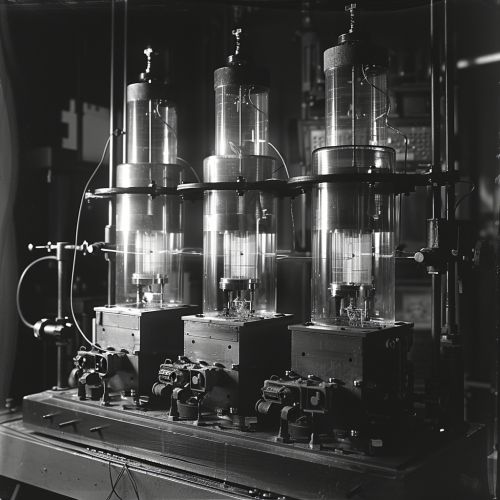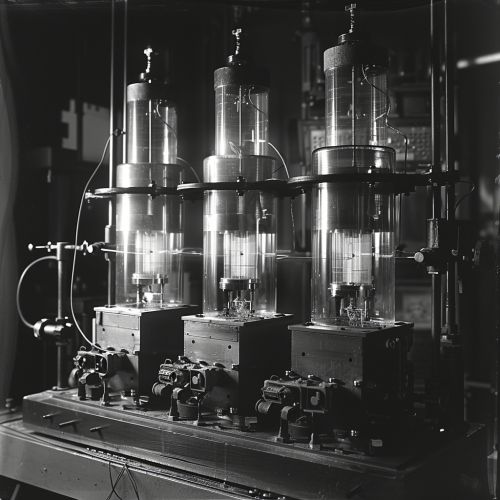J. J. Thomson
Early Life and Education
Joseph John Thomson, commonly known as J. J. Thomson, was born on December 18, 1856, in Cheetham Hill, a suburb of Manchester, England. He was the son of Joseph James Thomson, a bookseller, and Emma Swindells. From an early age, Thomson exhibited a keen interest in science and mathematics. He attended Owens College, now part of the University of Manchester, at the age of 14, where he studied engineering. His academic prowess earned him a scholarship to Trinity College, Cambridge, in 1876. At Cambridge, he studied under the tutelage of James Clerk Maxwell, a prominent physicist known for his work on electromagnetism.
Academic Career and Contributions
Early Research
Thomson's early research focused on the mathematical theory of electricity and magnetism. His first significant work, "A Treatise on the Motion of Vortex Rings," was published in 1883. This work explored the dynamics of vortex rings in a fluid, contributing to the understanding of fluid dynamics and electromagnetism.
Discovery of the Electron
In 1897, J. J. Thomson made his most famous discovery: the electron. Using a cathode ray tube, he conducted experiments that demonstrated the existence of a particle smaller than the atom. Thomson observed that cathode rays were deflected by electric and magnetic fields, suggesting that they were composed of negatively charged particles. He measured the charge-to-mass ratio of these particles and concluded that they were much lighter than hydrogen atoms, the lightest known atoms at the time. This discovery challenged the prevailing notion of the indivisibility of atoms and laid the foundation for modern atomic theory.


Plum Pudding Model
Following his discovery of the electron, Thomson proposed the "plum pudding model" of the atom in 1904. According to this model, the atom was composed of a positively charged "pudding" with negatively charged electrons embedded within it, like plums in a pudding. Although this model was later superseded by the Rutherford model, it was a significant step in the development of atomic theory.
Later Research and Achievements
Isotopes and Mass Spectrometry
Thomson's later research focused on the study of isotopes and the development of mass spectrometry. In 1913, he discovered that neon gas was composed of atoms with different masses, leading to the identification of isotopes. He developed the first mass spectrometer, an instrument that separates ions based on their mass-to-charge ratio, which became a crucial tool in analytical chemistry and physics.
Nobel Prize and Honors
In 1906, J. J. Thomson was awarded the Nobel Prize in Physics for his work on the conduction of electricity in gases. His contributions to science were widely recognized, and he received numerous honors, including being knighted in 1908 and serving as the President of the Royal Society from 1915 to 1920. Thomson was also appointed Master of Trinity College, Cambridge, a position he held from 1918 until his death.
Legacy and Impact
J. J. Thomson's discoveries had a profound impact on the field of physics and chemistry. His identification of the electron paved the way for the development of quantum mechanics and the modern understanding of atomic structure. The mass spectrometer he developed remains an essential tool in scientific research, used in fields ranging from chemistry to biology.
Thomson's legacy extends beyond his scientific contributions. He was a mentor to many prominent physicists, including Ernest Rutherford and Niels Bohr, who themselves made significant advancements in atomic theory. Thomson's work laid the groundwork for the development of technologies such as electron microscopy and semiconductor devices, which have had far-reaching implications in various industries.
Personal Life and Death
J. J. Thomson married Rose Elisabeth Paget in 1890, and they had two children, George Paget Thomson and Joan Paget Thomson. George Paget Thomson followed in his father's footsteps and became a renowned physicist, winning the Nobel Prize in Physics in 1937 for his discovery of the wave properties of electrons.
J. J. Thomson passed away on August 30, 1940, in Cambridge, England. He was buried in Westminster Abbey, a testament to his significant contributions to science.
